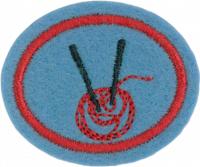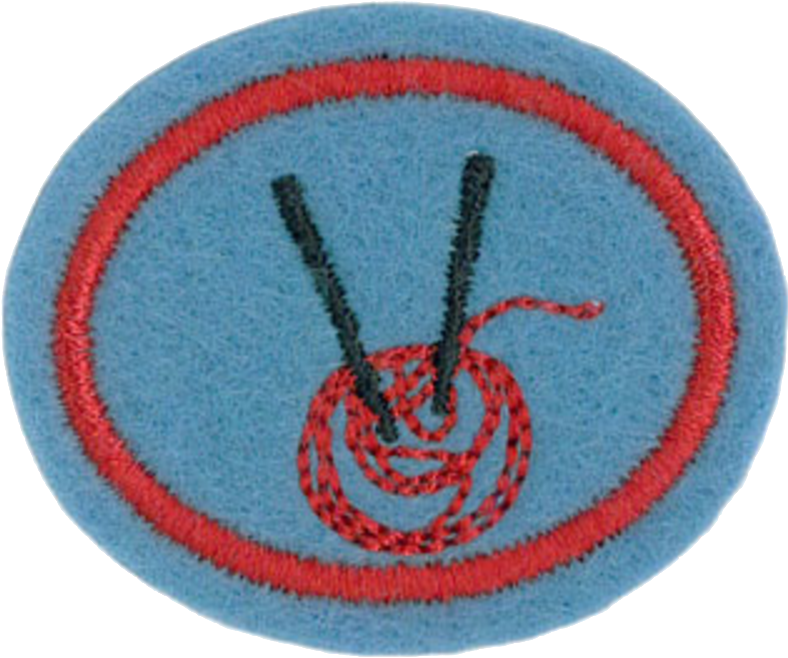Difference between revisions of "AY Honors/Knitting/Answer Key/es"
(Created page with "<noinclude>") |
(Created page with "</noinclude>") |
||
| Line 146: | Line 146: | ||
{{CloseReq}} <!-- 2f --> | {{CloseReq}} <!-- 2f --> | ||
{{ansreq|page={{#titleparts:{{PAGENAME}}|2|1}}|num=2g}} <!--T:44--> | {{ansreq|page={{#titleparts:{{PAGENAME}}|2|1}}|num=2g}} <!--T:44--> | ||
| − | <noinclude> | + | <noinclude></noinclude> |
| − | </noinclude | ||
| − | |||
| − | |||
| − | |||
| − | |||
| − | |||
| − | |||
| − | |||
| − | |||
| − | |||
| − | |||
| − | |||
| − | |||
<div lang="en" dir="ltr" class="mw-content-ltr"> | <div lang="en" dir="ltr" class="mw-content-ltr"> | ||
Revision as of 14:52, 28 April 2021
1
1a
1b
1c
1d
1e
1f
1g
1h
1i
2
2a
2b
2c
2d
Ribbing has a strong tendency to contract laterally, forming small pleats in which the purl stitches recede and the knit stitches come forward. Thus, ribbing is often used for cuffs, sweater hems and, more generally, any edge that should be form-fitting. The elasticity depends on the number of knit/purl transitions; 1x1 ribbing is more elastic than 2x2 ribbing, etc. However, some cable patterns may "pull in" more than ribbing (i.e., have a smaller gauge); in such cases, a ribbed border may flare out instead of contracting.
2e
2f
2g
3
3a
Wool is sensitive to agitation and hot water, which causes the overlapping scales of the fiber to stick together, what we call shrinking, or, if we do it on purpose, felting.
To avoid this, wools should be washed in lukewarm water with little agitation. Most people prefer to wash wool items by hand to avoid any possibility of felting when they can't see what's happening inside their washing machine.
3b
Yarn can (and is) spun from the hair of many animals, including rabbits (angora) and dogs (chiengora). The Native Americans that lived in the Northwest portion of the United States bred dogs so that their hair could be spun into yarn and used in making exceptionally warm garments.
Garments made from hair should only be washed if they are soiled. Wash in warm water with a mild liquid detergent (such as dish detergent) or shampoo. It should not be agitated. Fill a basin, turn off the water, and then add the garment to the basin. Care must be taken that water is not sprayed on the garment. Excess water should be squeezed out, and the garment can then be rolled in a towel. Lay it flat to dry, and never put it in a dryer.
3c
Synthetics are well-suited for the many currently popular novelty yarns, and their range is vast. Manufacturers continually attempt to make synthetic yarns that mimic the best properties of the natural fibers. Synthetics are generally durable, water-resistant, and strong, but can also be somewhat non-breathable and non-insulating. Most are machine washable, but are very sensitive to heat, and they will melt or burn at fairly low temperatures. Nevertheless, knitters can’t help but be drawn to their seductive textures and rich colors.
Polyester: Polyester is made from a group of condensation polymers. It is resilient, smooth, crisp, and springy. It can be shaped with heat and is insensitive to moisture. It is lightweight, strong, and resistant to creasing, shrinking, and stretching. It is nicely washable, and is not damaged by sunlight, weather, moths, or mildew. Polyester is very often combined with other fibers.
Acrylic: Acrylic is a synthetic polymer fabric or yarn, and is lightweight and warm with a very wool-like feel. Although it is resistant to moths, oils, and chemicals, it is prone to static and pilling. 100% acrylic yarns can be a bit “cheap-looking,” if not chosen with care.
Nylon: Nylon was the first completely synthetic fiber. It is strong and resistant to many chemicals and moths. It is also easy to wash and is very non-absorbent. It can be a bit scratchy if not blended with another fiber.
Viscose / Rayon: Viscose is a man-made fiber made of wood or cotton cellulose treated with sodium hydroxide to make a liquid that can be extruded as cellophane or rayon yarn. Rayon fiber is quite absorbent, dyes very well, is soft, and has a nice drape. Although it may shrink, it does not melt at high temperatures, and it is resistant to moths, bleach, and many common household chemicals. Rayon thread is divisible, shiny, and good for blending, but is not hard wearing.
4
A new ball of yarn is attached to the working yarn with a simple overhand knot. This knot serves to hold the new yarn in place until a length of it has been knitted into the fabric. The end of both the old yarn and the new yarn are then trimmed and woven in. Adventist Youth Honors Answer Book/Knot/Overhand
5
5a
Worsted Weight (also called Afghan or Aran) yarn is a medium weight yarn that is used for a wide range of projects. Thick adult sized clothing (such as sweaters, gloves, scarves, etc.) and home items (such as pillows, afghans, blankets, dishcloths, etc.)are customarily made from worsted weight yarn. Worsted weight is used when items should be relatively durable, and thick, but not bulky. Needle sizes 7-9 are recommended for use with worsted weight yarn, with a gauge of 4-5 stitches per inch in stockinette stitch.
5b
Sport weight (also called heavy baby weight, or fine) yarn is used to create objects with a little more weight than sock yarn, but lighter weight than DK yarn. Baby clothing, light mittens, and light blankets are examples of items usually knit from sport weight yarn. The recommended needle size for sport weight yarn is 1-3, with a gauge of 7-8 stitches per inch in stockinette stitch.
5c
Chunky also called craft, or rug weight) is a heavy/bulky weight yarn (not to be confused with Bulky, or Roving, which is a super bulky weight yarn). It is a thick yarn that works up quickly on large needles, so if you don't have hours to spend on a new scarf, this is a good choice for something thick and warm, but also fast. It can also be used to make a quick throw or blanket.
Needle size: US 9 - 11 (5.5mm - 8mm)
Hook size: US K10 1/3 - M13 (6.5mm - 9mm)
5d
Bulky or Roving, is a super bulky weight yarn used for extremely thick, very quickly knitted objects, such as very heavy hats, coats and scarves. It is recommended that objects knitted in roving are done with needles sized 11 or greater, with a standard gauge of 1.5 - 2 stitches per inch.
6
- a. Zapatillas
- b. Guantes sin dedos (mitones)
- c. Escarpines de bebé
- d. Sombrero
- e. Bufanda
- f. Suéter sin mangas
- g. Opción razonable
A multitude of free patterns can be found at Ravelry.com.
Scarf
A scarf is perhaps the simplest knitting project possible. If super bulky yarn is used with 12mm needles, the scarf can be knitted quickly which helps to abate any patience problems your Pathfinders might have.
- Start by casting on 12 stitches.
- Knit every row (forming a garter stitch) until the scarf's length exceeds the knitter's patience.
- Bind off.
Reasonable choices
Here are some reasonable choices you might consider:
- Socks
- There are plenty of free patterns for socks at http://ravelry.com and http://www.lionbrand.com
- Leg warmers
- Leg warmers are nothing more than open tubes. This would be a good project for cabling.
- Draft blocker
- A draft blocker is placed on the floor by a door to prevent drafts. It is a sealed tube filled with some heavy stuffing material (such as florist's pebbles).
- Seat cover
- A seat cover can be used to provide a softer seat on a hard chair.
- Pot holder
- A pot holder is nothing more than a square upon which hot pots may be placed. Be sure to choose a yarn that will not melt (wool or cotton, not acrylic). Do not use a stockinette stitch, as this will cause the finished product to curl unacceptably. Rather, use a garter stitch or ribbing.


